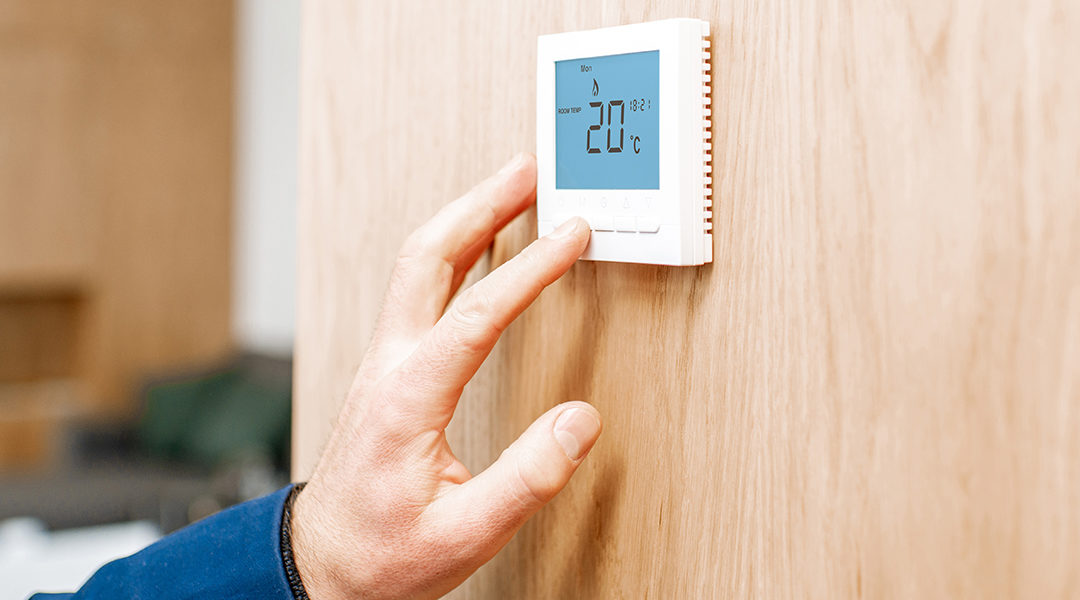If you want to learn more about how your air conditioner and heating system works to maintain the comfort of your home, there are some basic air conditioning measurement units you should understand. You won’t need to know everything about your system, but understanding a few key terms can help you identify how your system maintains performance and the efficiency of your unit.
Once you understand these terms, you’ll be able to ask more in-depth questions of your air conditioning experts in Glastonbury from SM Mechanical when discussing maintenance, repairs, and replacement options for your air conditioning unit.
What Is a BTU and How Does It Relate to Capacity?
A BTU is a British thermal unit, which is defined as the amount of energy necessary to heat a pound of water by one degree Fahrenheit. A BTU is the same amount of energy that must be extracted to cool a pound of water by one degree Fahrenheit. The amount of energy is equivalent for heating or cooling.
Manufacturers and HVAC technicians typically measure the capacity of an air conditioner in BTUs. The capacity describes the output capabilities of an HVAC’s heating and cooling processes.
You may have heard of some air conditioners referred to as “1-ton air conditioners” or similar. “Tons” refer to an antiquated capacity measurement from before air conditioning was invented. People used to buy blocks of ice to keep their homes cool during the heat of summer. Manufacturers had to find an easy way to describe the cooling capacity of the new machines when air conditioning was first invented.
Air conditioning manufacturers of the time chose to describe the cooling power of the new air conditioners relative to the cooling capacity of blocks of ice with which many people were already familiar. So a 1-ton air conditioner has the same cooling power as one ton of ice. We standardize each ton to be equivalent to 12,000 BTUs. Therefore, a 4-ton A/C has a 48,000 BTU capacity.
Your HVAC expert may reference capacity in BTUs, tons, or use both terms interchangeably depending on context. Be sure you’re aware of variations in terminology that may mean nearly the same thing.
Does Capacity Relate to Airflow?
We measure airflow in cubic feet per minute, or CFM. Many air conditioning units output airflow of approximately 400 CFM per ton.
If you already know that you have a 2-ton air conditioner, then you know to expect 800 CFM for your unit’s airflow.
However, if you only know that your unit has a capacity of 24,000 BTUs, then you can convert BTUs to tons when you understand that each ton is equivalent to 12,000 BTUs. From there, you can figure that your unit produces an airflow of 800 CFM.
Make sure that your air conditioning technician is measuring your unit’s airflow during regular maintenance to ensure that your unit is working efficiently.
How Does Heating Factor into My Home’s Energy Efficiency?
Your HVAC technician will measure your heating system’s Heating Seasonal Performance Factor, or HSPF, during maintenance. HSPF measures your heat pump’s operating efficiency when it is in heating mode during the cold months when you use heating in your home. A higher rating describes higher efficiency.
If your heating system uses natural gas fuel, you should also know the term AFUE, which is the Annual Fuel Utilization Efficiency. This rating describes the ratio between fuel consumption for heating compared to the amount that is burned off and emitted as exhaust. An AFUE rating of 88 describes 88% utilization for heating, with the remaining 12% going to waste as exhaust.
No matter which heating system you have in your home, knowing about HSPF and AFUE can help you make decisions about your system when your HVAC expert makes recommendations for your home heating solutions.
What If I Use Both Heating and Cooling Throughout the Year?
If you’re curious about your HVAC system’s efficiency, you might find a sticker on your unit that says “SEER.” The SEER rating describes the Seasonal Energy Efficiency Ratio, and it is defined by the cooling output during the standard cooling season divided by the energy it uses in that period in Watt-Hours. This rating described the energy efficiency of your unit to cool your home when it is in use the most.
This same ratio can be applied to heat pumps to determine their energy efficiency. Divide the output by the energy use in Watt-Hours to determine the SEER rating of the heating system.
The US Department of Energy standardized the minimum SEER rating to 13. Even a SEER rating of 14 can increase your energy savings by 7%. A SEER rating of 20 or higher can save you 35% or more in annual savings to cool your home.
Can an HVAC Technician Help Me Select the Best Heating and Cooling Systems for My Home?
Your experienced HVAC technician can help you consider all the important factors in deciding which cooling and heating systems would work best in your home. Any skilled HVAC expert would consider several of these air conditioning measurement units to recommend the right fit system for your home.
When choosing a new or replacement HVAC system, consider:
- capacity and the square feet in the home.
- energy efficiency and energy costs.
- airflow compared to capacity and efficiency ratings.
Your HVAC technician will do a load calculation to determine the size necessary for your air conditioning and heating system. This in-depth analysis will help your technician recommend a good fit to keep your home cool in the summer and warm in the winter.
Contact SM Mechanical in Glastonbury, CT
Read more about energy efficient HVAC systems and contact SM Mechanical for more information about air conditioning measurement units and how they affect HVAC decisions.
SM Mechanical is a family-owned HVAC services company located in Glastonbury, CT. We have served our community as trusted HVAC experts for over 15 years. Call us today for an HVAC consultation at 860-296-5100.

